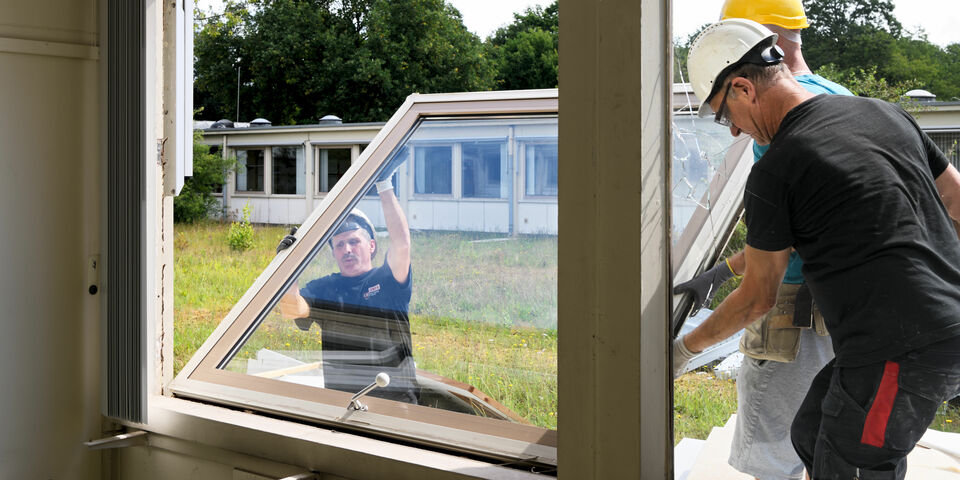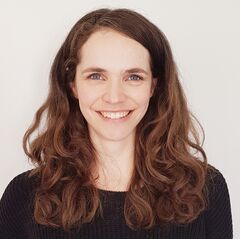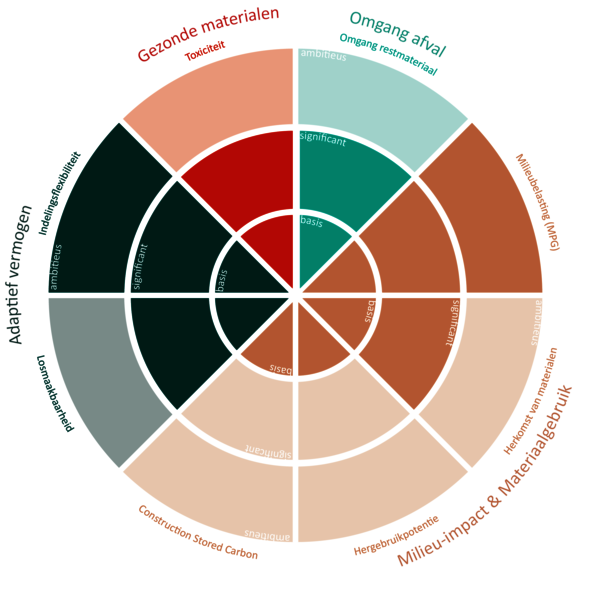Real Estate to adopt a more circular approach to construction
How can you make use of demolition waste? What impact do the materials you use have on the environment? What is the adaptive capacity of buildings? From now on, Real Estate will place greater emphasis on these questions as it devises its (re)construction plans. A working group spent the past year considering the options with regard to circular construction and will present a policy paper this week that needs to help the university increase its efforts to integrate circularity in building processes.
Circular construction has been on Real Estate’s radar for some time now. In 2020, the Paviljoen building was disassembled and partly reused instead of demolished (see main photo). This pilot project, during which TU/e researchers hoped to learn more about circular demolition, proved to be highly instructive, says Sonja Rijlaarsdam, who was recently appointed TU/e’s first program manager projects and advisor circularity. She also chaired the working group that spent the past year looking into ways how to make circularity a more prominent part of Real Estate’s construction processes. The working group is the result of TU/e’s Sustainability Vision for Operational Management, which was published last year.
“Sustainability already mattered to Real Estate for some time,” says Rijlaarsdam, who acted as project leader during the renovation of Atlas. “It’s no coincidence that Atlas is the world’s most sustainable educational building. And the building is quite circular as well, since we reused the entire construction and facade construction. But we didn’t adopt a specifically circular frame of mind when we renovated Atlas. We didn’t consciously use any reused or renewable materials.”
Future-proof
In part thanks to the New Normal, an initiative in which various parties nationwide develop a new norm for circular construction, Rijlaarsdam has learned that there’s much more to circularity than just reusing materials. “Circular construction means thinking about what happens to demolition waste and residual material from construction activities. It also means taking into account the environmental impact of the materials you use. Concrete and steel have a much greater impact on the environment than wood, for example, which can grow back. Circularity also includes a building’s adaptive capacity, which tells you something about how future-proof a building is, how adaptable it is, or how easy it is to disconnect certain parts.”
These are just a few examples of the themes that feature in the policy document that the working group presented to Real Estate’s management team yesterday, and that needs to serve as a guideline to ensure that circularity will actually become a part of future building projects. Rijlaarsdam: “The idea is to determine for each theme how ambitious we want to be, and can be, in applying it to a project. In some cases, the market isn’t ready, even if you are, and in other cases, one theme gets in the way of another. Our first aim remains to offer proper accommodation, but at the same time, you look for opportunities, as well as barriers, in the field of circularity.”
Impuls
The first pilot project during which circularity will be a truly integral part of the reconstruction process, is the renovation of Impuls, the small rectangular building next to Luna that currently serves as a temporary accommodation for people from Gemini Noord, which is currently being renovated. The building’s future purpose still remains unclear at this point. “Its purpose will have a significant impact on what we can do in terms of circularity; a lab building, for example, requires something entirely different than an educational building. But we’re very ambitious to adopt a circular renovation that can serve as an example.”
During the renovation of Impuls, Real Estate will join forces with the department of Built Environment. The university is also trying to secure funding for the project. “We have a standard budget. When you want to do something special, you need something extra. Especially since we want to determine, together with built environment, what kind of research we can do there.” The fact that Impuls needs to become a first example project, doesn’t mean that options in the field of circularity aren’t being considered for other, ongoing projects, Rijlaarsdam says. She herself, for example, was involved with the renovation of Gemini in her capacity as project leader. A definitive design for that building is already in place, but she would nevertheless like to consider some possible options regarding circularity.
Pioneering phase
The fact that Real Estate is still in a pioneering phase as far as circularity is concerned, makes it difficult to predict how the project will proceed, according to Rijlaarsdam. For one thing, certain reusable materials might not be available on time, or they might not be available in the proper dimensions. “The major difference between this method and our usual one, is that there will be more uncertainties. But a project leader likes to have certainties. That’s never entirely possible, but you try to cover the risks. This time, however, you have to manage a process in which things aren’t that clear and obvious.”
TU/e isn’t the only organization that’s keen on adopting a more circular approach to construction. Other universities, municipalities and housing corporations too are moving in this direction. At the same time, the transition towards circularity is also taking place in the construction sector. Some demolition companies, for example, have already started to refer to themselves as disassembly companies, and people can also buy and sell materials at market places nowadays, but these have only just started to emerge, Rijlaarsdam says. “When I start to renovate Impuls, I won’t have the means to access centralized databases to search for the materials I need. But perhaps we’ll reuse elements on campus from another project that’s scheduled for demolition. There are many interesting things to think about.”
What matters most at this point, Rijlaarsdam says, is to include the organization in all the steps Real Estate is about to take, and to explain these steps. And to take a good look at what others are doing. “We will run into some serious difficulties, that’s for certain. But it’s worth it.”




Discussion